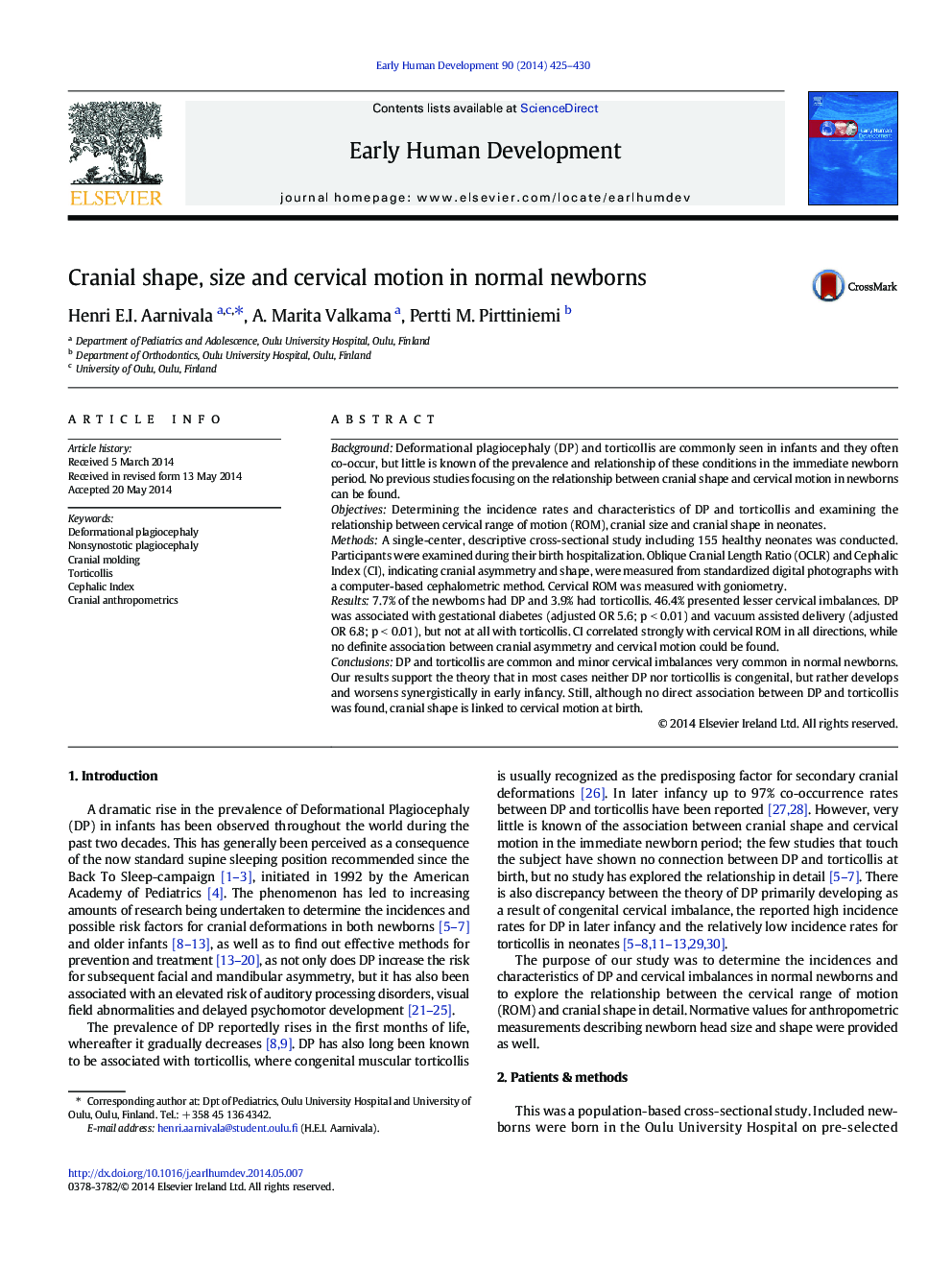| Article ID | Journal | Published Year | Pages | File Type |
|---|---|---|---|---|
| 3916533 | Early Human Development | 2014 | 6 Pages |
•We examine the relationship between cranial shape and cervical motion in neonates.•Digital photography and goniometry are used to study a cohort of 155 normal newborns.•Deformational plagiocephaly and impaired cervical motion are not associated at birth.•Cephalic Index directly influences the cervical range of motion at birth.•Gestational diabetes and vacuum assisted delivery increase the risk of DP at birth.
BackgroundDeformational plagiocephaly (DP) and torticollis are commonly seen in infants and they often co-occur, but little is known of the prevalence and relationship of these conditions in the immediate newborn period. No previous studies focusing on the relationship between cranial shape and cervical motion in newborns can be found.ObjectivesDetermining the incidence rates and characteristics of DP and torticollis and examining the relationship between cervical range of motion (ROM), cranial size and cranial shape in neonates.MethodsA single-center, descriptive cross-sectional study including 155 healthy neonates was conducted. Participants were examined during their birth hospitalization. Oblique Cranial Length Ratio (OCLR) and Cephalic Index (CI), indicating cranial asymmetry and shape, were measured from standardized digital photographs with a computer-based cephalometric method. Cervical ROM was measured with goniometry.Results7.7% of the newborns had DP and 3.9% had torticollis. 46.4% presented lesser cervical imbalances. DP was associated with gestational diabetes (adjusted OR 5.6; p < 0.01) and vacuum assisted delivery (adjusted OR 6.8; p < 0.01), but not at all with torticollis. CI correlated strongly with cervical ROM in all directions, while no definite association between cranial asymmetry and cervical motion could be found.ConclusionsDP and torticollis are common and minor cervical imbalances very common in normal newborns. Our results support the theory that in most cases neither DP nor torticollis is congenital, but rather develops and worsens synergistically in early infancy. Still, although no direct association between DP and torticollis was found, cranial shape is linked to cervical motion at birth.
